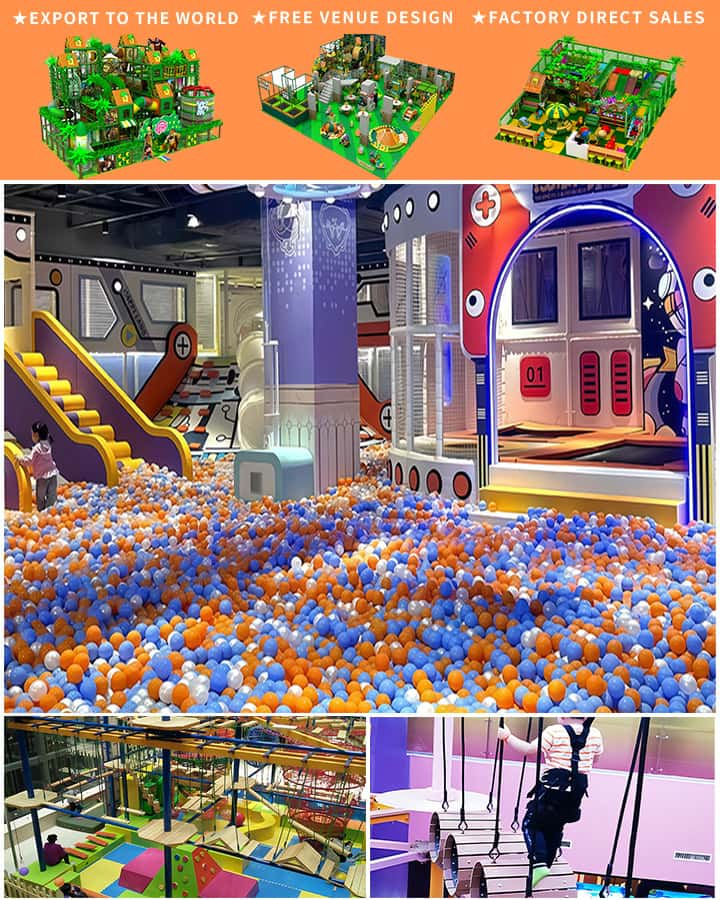When it comes to keeping children entertained and engaged, an indoor playground offers a fantastic solution. Whether you’re a parent looking for ways to keep your little ones busy at home or a business owner aiming to create a captivating play area, designing the perfect indoor playground requires creativity, planning, and a touch of magic. Here’s a comprehensive guide to help you create an unforgettable indoor playground experience for kids.
1. Understand the Importance of Indoor Playgrounds
Indoor playgrounds serve multiple purposes. They provide children with a safe environment to expend energy, foster physical development, and encourage social interaction. Unlike outdoor playgrounds, they offer the advantage of being accessible year-round regardless of weather conditions. This makes them an excellent choice for families living in areas with harsh climates. Additionally, indoor playgrounds can be tailored to fit various themes and educational objectives, making playtime both fun and enriching.
2. Choose the Right Location
The first step in creating an indoor playground is selecting an appropriate location. If you’re setting up at home, consider converting a basement, garage, or even a large living room into a play space. For commercial ventures, renting or leasing a dedicated space in family entertainment centers or community buildings would be ideal. Ensure the location has enough ceiling height and is free from hazards that could jeopardize safety.
3. Design with Safety in Mind
Safety is paramount when it comes to indoor playgrounds. Use soft flooring materials such as foam mats or rubberized surfaces to cushion falls. Make sure all equipment is age-appropriate and meet safety standards. Install padded coverings on walls and around equipment to prevent injuries. Regularly inspect the playground to ensure all components are secure and well-maintained.

4. Incorporate a Mix of Activities
An engaging indoor playground should offer a variety of activities to cater to different interests and age groups. Consider including:
- Climbing Structures: Wall climbers and climbing frames promote physical strength and coordination.
- Slides: Always a favorite among kids, slides add an element of excitement.
- Ball Pools: Filled with colorful plastic balls, ball pools provide endless fun and opportunities for sensory play.
- Interactive Toys: Incorporate interactive elements like digital games, building blocks, or musical instruments to stimulate cognitive development.
- Obstacle Courses: These challenge kids’ problem-solving skills and physical abilities.
5. Add Themed Decorations
Transform your indoor playground into a magical world with themed decorations. From pirate ships and jungle adventures to space exploration and fairy-tale castles, a theme can make the environment more immersive and enjoyable. Use vibrant colors, themed furniture, and wall murals to bring your vision to life. Don’t forget about lighting—colorful lights and lanterns can add to the whimsical atmosphere.
6. Consider Educational Elements
While fun is the primary goal, incorporating educational elements can enhance the value of an indoor playground. Set up areas with books, puzzles, and learning toys to encourage literacy and critical thinking. You can also include boards with alphabets, numbers, and shapes to introduce fundamental concepts in an engaging manner.
7. Ensure Easy Maintenance
Maintenance is key to keeping the playground clean and inviting. Choose materials that are easy to wipe down and sanitize. Establish rules for shoe-free zones and regular cleaning schedules to maintain hygiene. Storage solutions for toys and equipment will help keep the space organized and clutter-free.
8. Listen to Feedback
Finally, pay attention to the feedback from the children who use the playground. Their input can provide valuable insights into what works and what needs improvement. Observe their interactions, note any potential hazards, and be ready to make adjustments as needed.
In conclusion, creating the perfect indoor playground for kids involves thoughtful planning, creativity, and a focus on safety and engagement. By incorporating a mix of physical challenges, themed decorations, and educational elements, you can build a space where children can play, learn, and grow in a safe and stimulating environment. So, roll up your sleeves and get ready to bring joy and excitement to the next generation!




